Next to the wonderful new Gennaker I wrote about in the previous post, our Oceanis 34.1 currently in commissioning on Lake Constance has another “first” to offer: Our first rubrail not made from Teak. Our technicians installed this collision preventer made from Sapele Mahogany (or Sapelli) lately and I found it interesting to show the outcome.
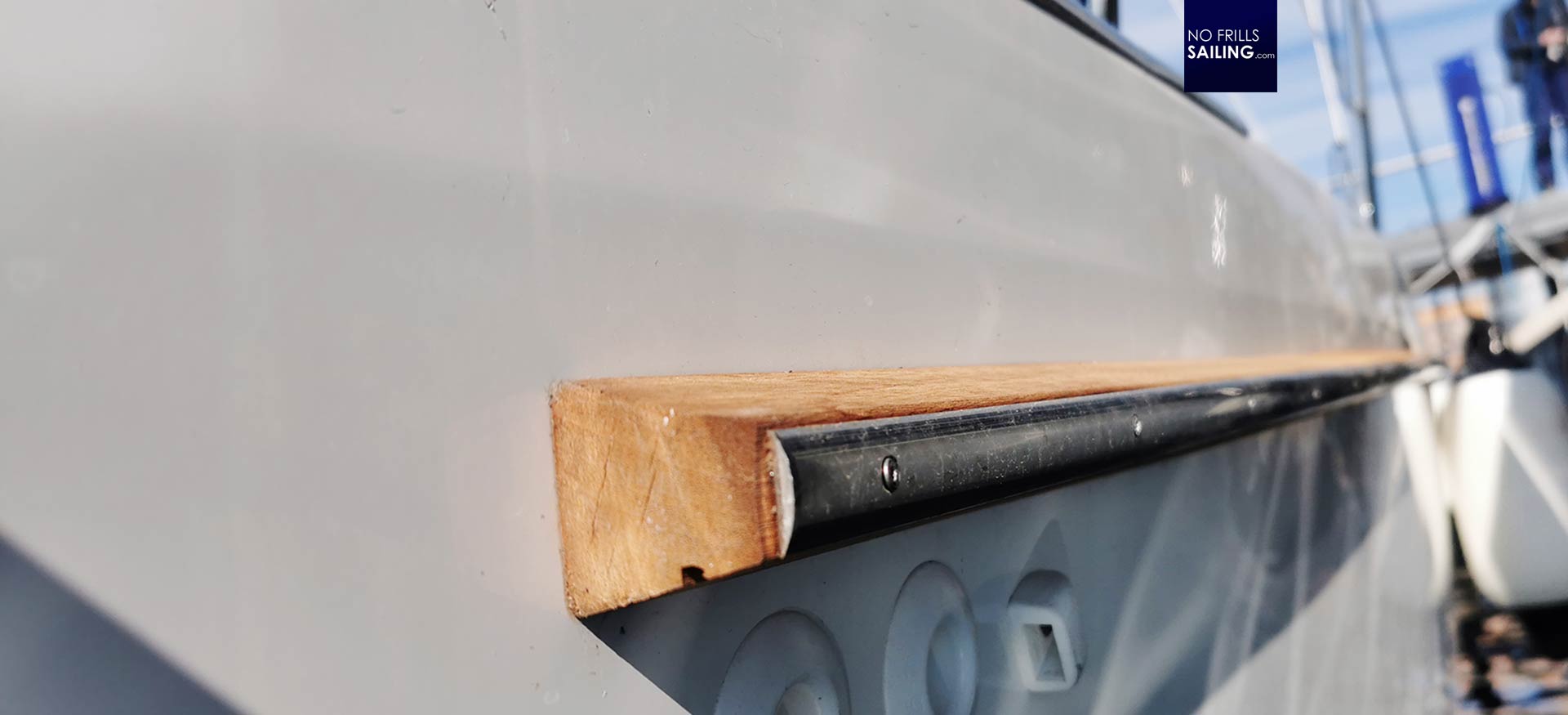
For the rubrails we offer and install on the boats of our clients, we came to the conclusion over the years that a 4 by 4 centimeters massive wooden batten in combination with a 2.5 millimeters thick VA-high quality stainless steel band offers the best combination of effective deflection of both blunt and pointy impacts. The boat´s hull is therefore best protected against collisions as well as scratches.
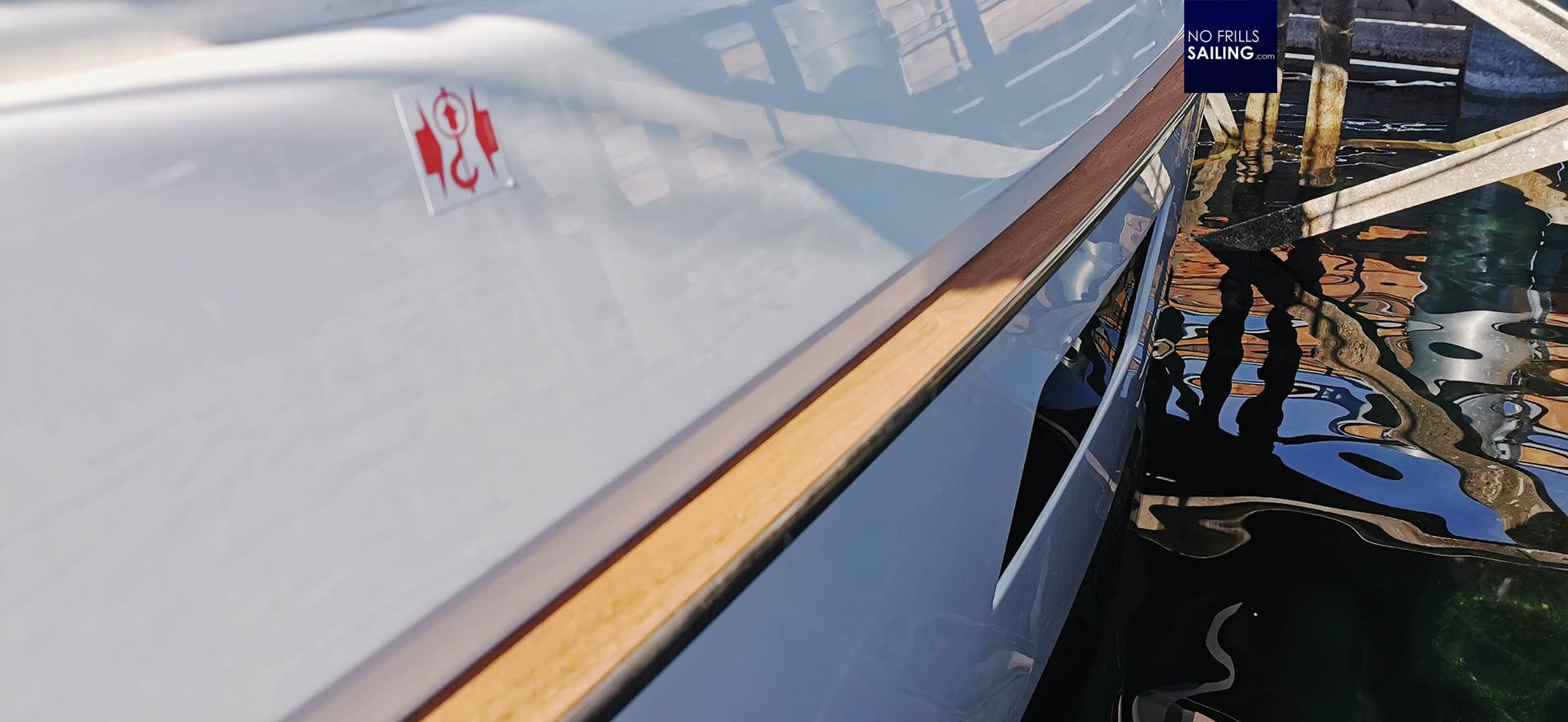
Checking the work of my colleagues I must say that I cannot spot any difference from Teak we have been used up until now. The quality of the wood looks awesome: No cracks, dense texture and color-wise no difference from Teak. The guys told me that working with Sapele was somewhat “more comfortable” than with Teak as the material properties vary a bit: Teak, so they say, is a bit more dense, thus harder, and way more oily, which makes it more difficult to fit properly.
Sapele Mahogany vs. Teak
Back at home I do have samples of both rubrails (I use for showing to customers and explaining our product) and putting them both side by side reveals … nothing. They look both almost the same, the color and the feel of the product makes it hard to tell them apart. Just by taking a deep sniff you may be able to smell the Teak.
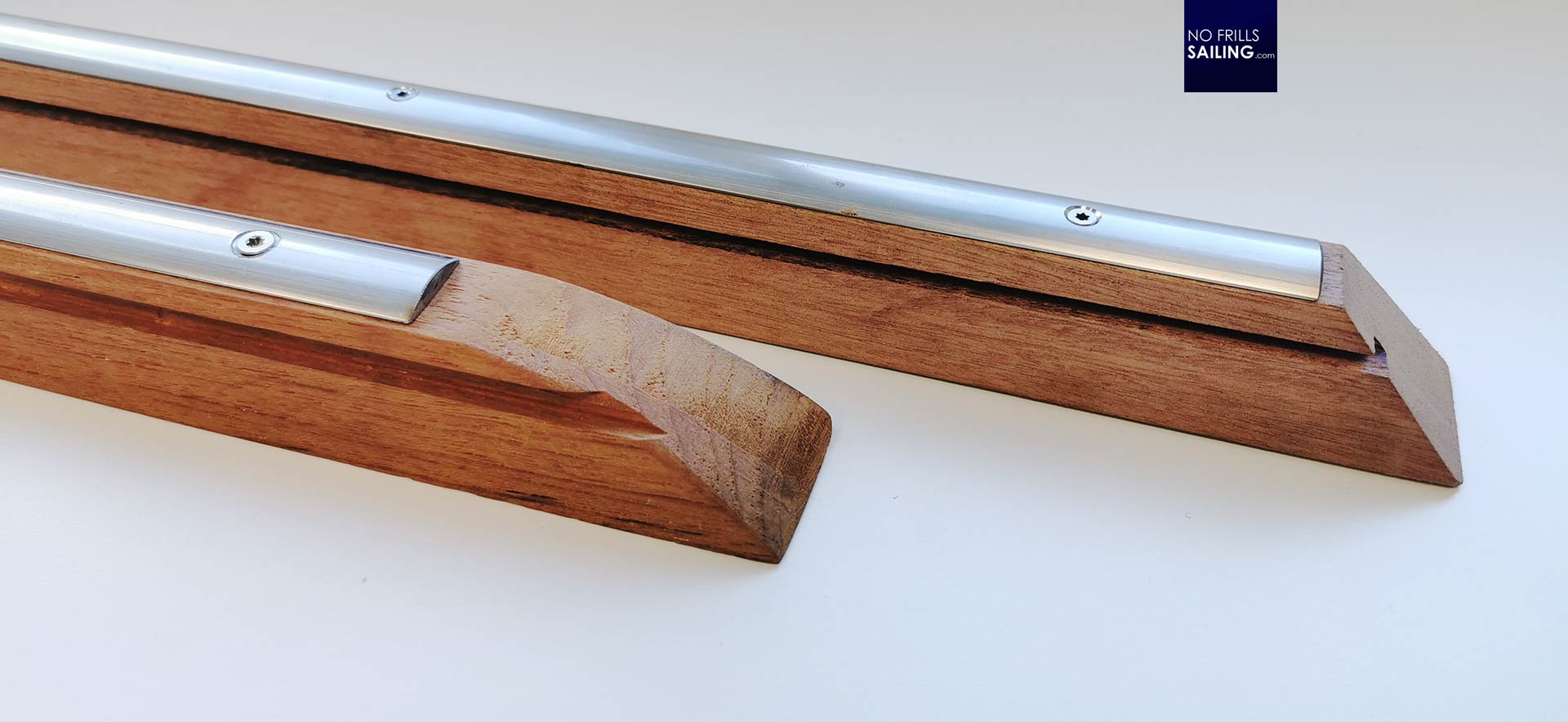
Our supplier, who hasn´t ran out of Teak by now by the way, has tested Sapele wood and rubrails by fitting samples to his home´s roof: These samples are unprotected and subject to snow, rain, wind, temperature variations and downpour. Checking upon the outcome of this long-term test, he can assure that the material properties of Sapele aren´t changing (meaning: degrading) much different from those of Teak. I would guess, since Sapele hasn´t that amount of oil and hence antibacterial or fungicide properties, that one may treat Sapele from time to time with special products.
African exotic woods: Sustainable and morally justifiable?
I am personally happy that we can offer this alternative. There are other products, mainly plastic rubrails or thick cords, which in my opinion look and feel cheap, clunky and ugly. Plastic rubrails are the worst. Our natural wooden rubrail gives even a modern boat like this Oceanis 34.1 a distinct, classy look without being overly dominant or – as said – ugly. But is Sapele Mahogany “better” than Teak from a sustainability point of view?
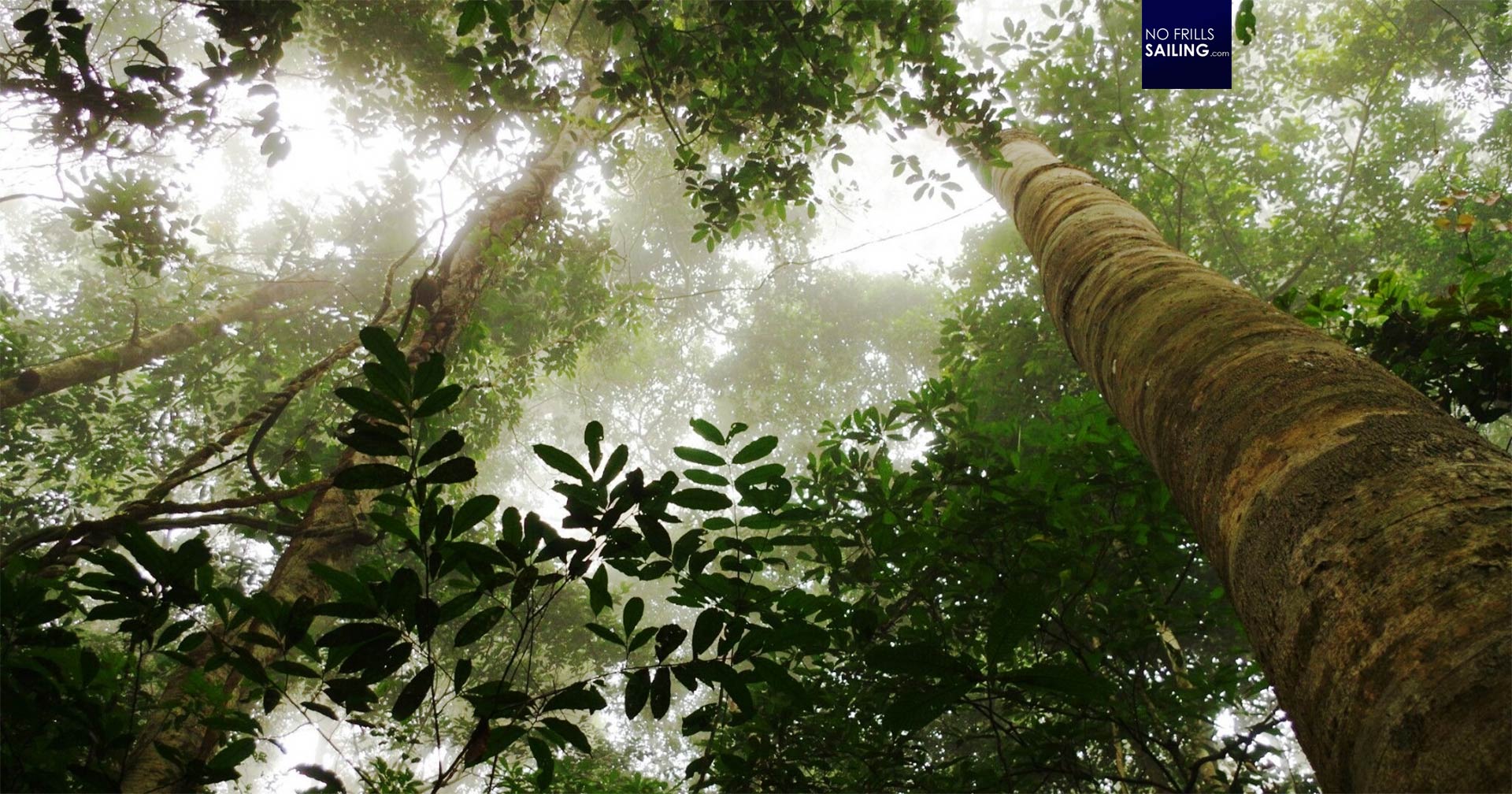
Of course, there is always a controversy if utilizing exotic timber is good. No matter if it is sourced from Asia, Africa or from Southern America, it´s origin is mostly the third or developing world. That means, no matter if it is FSC-certified or “green”-labelled by any other organization, that cutting down those trees hurts the environment, possibly the rain forest and puts the very people sourcing it are exploited. But this, I would say, is a different discussion that has to take place in a different blog: “Our” system is based on the exploitation of others, be it trees, crude oil for the hull´s resin, bauxite for the aluminium of our masts or the Sri Lankan sewers making our sails affordable.
Why does a sailboat need a rubrail, anyway?
For now, this Oceanis 34.1, being our first sailboat to be sailing with a Sapele rubrail, looks just awesome. The amazing thing about it is that Sapele is about 10 percent cheaper than Teak, which is now prohibited to work with as the military dictatorship of Myanmar is under sanctions. Since everyone – not just yards, but also makers of garden furniture for example – is now looking for Teak-substitutes, Sapele sees an increase in demand, hence prices are rising. But why need a rubrail? Well, look at the picture:
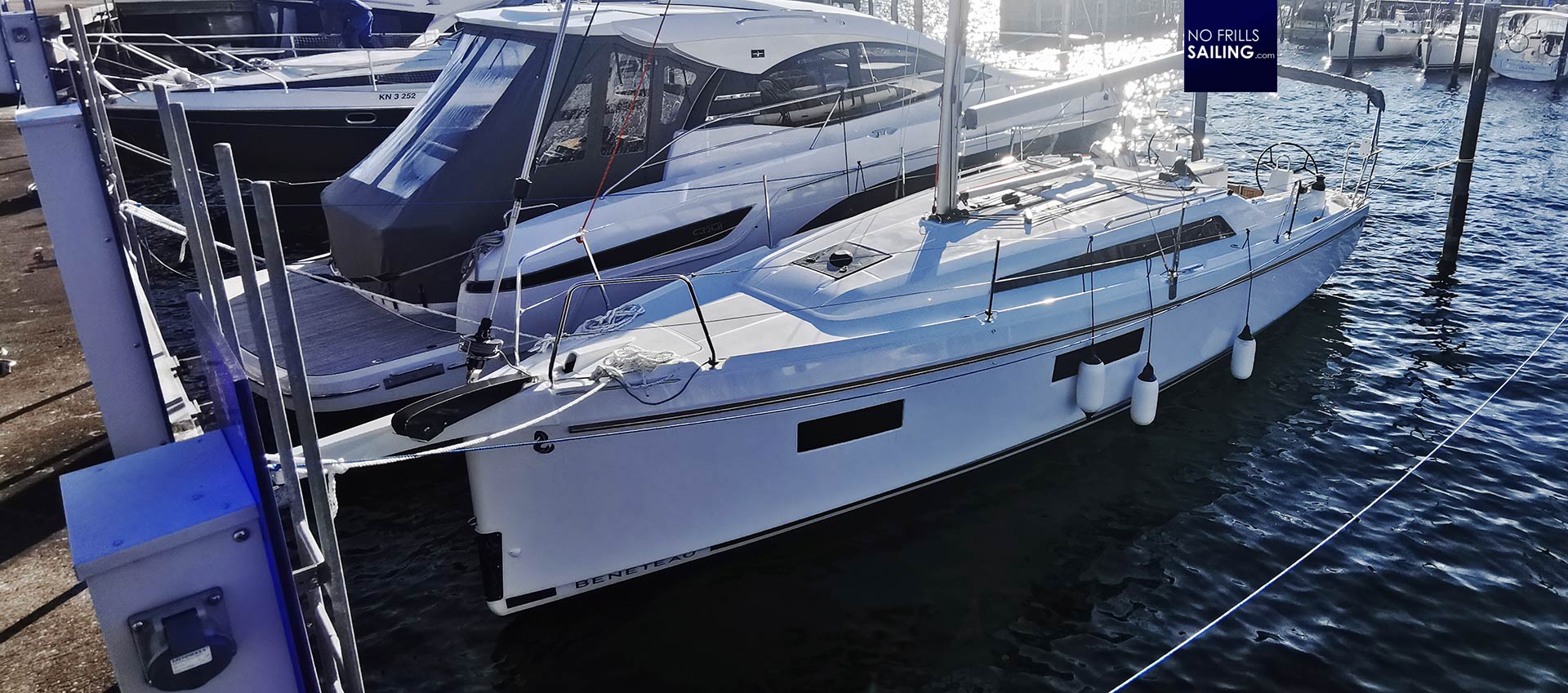
Whereas in the Mediterranean area boats are berthed stern first, “roman catholic”-style, in Northern Europe, parts of the French Atlantic coast and many American marinas a boat has to pass two pillars. No matter if these are made from timber or steel rammed into the marina´s seabed, hitting these pillars is almost inevitable. Scratching along with a GRP-hull, at best, makes ugly scratches, worst case are deep cracks in the laminate. Having such a rubrail is pure relief for the helmsmen when landing the boat, more so if wind is apparent. As such, we are very happy with Sapele – a true alternative for Teak, as it seems.
Picture of Sapele trees copyright and curtesy by Grey & Sanders
You may also read these related articles:
Supplanting Teak in boatbuilding
Iroko as Teak-substitution
Faux Teak-decking made from polymers
